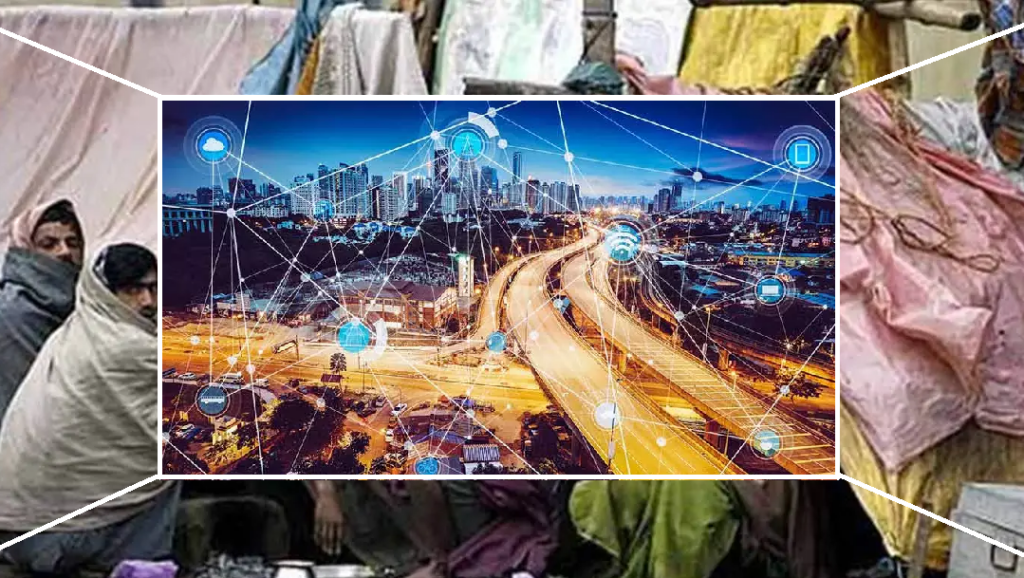
- One of the key factors contributing to India’s success in eliminating extreme poverty is its robust economic growth.
- India’s journey towards eliminating poverty represents a monumental achievement and a testament to its commitment to inclusive development.
- Through a combination of economic growth, social welfare initiatives, and targeted interventions, India has made significant strides in improving the lives of millions of its citizens.
India has been declared free from extreme poverty according to a comprehensive report released by Brookings. This significant achievement marks a remarkable milestone in India’s journey towards economic development and social progress. The report, compiled by a team of experts, highlights India’s successful efforts in alleviating extreme poverty and improving the living standards of millions of its citizens. According to Brookings, high growth and a large decline in inequality have combined to eliminate extreme poverty in India.
Extreme poverty is defined according to the UN’s definition of living on less than $2.15 a day. The eradication of extreme poverty in India signifies a monumental victory in the fight against economic deprivation. For decades, India has grappled with the challenge of extreme poverty, with a significant portion of its population living below the poverty line. However, concerted efforts by the government, civil society organizations, and the private sector have led to substantial progress in poverty reduction initiatives.
One of the key factors contributing to India’s success in eliminating extreme poverty is its robust economic growth. Over the past few decades, India has emerged as the fastest-growing major economy in the world, experiencing sustained GDP growth and rapid industrialization. This economic transformation has created numerous opportunities for employment and income generation, lifting millions of people out of poverty.
Furthermore, the Indian government has implemented a range of social welfare programs aimed at assisting the most vulnerable sections of society. Initiatives such as the PM Ayushman Yojana, the Public Distribution System (PDS), the Pradhan Mantri Ujwala Yojana and the Pradhan Mantri Jan Dhan Yojana (PMJDY) have played a crucial role in ensuring access to food, financial services, and employment opportunities for millions of Indians living in poverty. The Jandhan, Aadhar and Mobile commonly referred to as the JAM trinity have played a huge part in streamlining the benefit transfer of government directly to the beneficiaries without any leaks.
The Swachh Bharat Mission has played a crucial role in poverty alleviation by improving sanitation and hygiene, enhancing public health, and creating employment opportunities. Access to clean toilets and hygienic facilities uplifted living standards, reduced healthcare costs, and empowered communities, contributing to the overall well-being and economic resilience of impoverished populations.
The Pradhan Mantri Garib Kalyan Yojana (PMGKY) aimed to mitigate poverty by providing financial assistance, food security, and healthcare support to vulnerable populations during crises like the COVID-19 pandemic. Through relief measures and social welfare initiatives, PMGKY helped alleviate economic hardships, ensuring basic needs for impoverished communities, and fostering resilience.
Moreover, India’s focus on inclusive growth and human development has been instrumental in tackling the root causes of poverty. Investments in education, healthcare, and infrastructure have improved access to essential services and enhanced the quality of life for millions of people across the country. By prioritizing social development alongside economic growth, India has created a more equitable and sustainable path towards prosperity.
Investment in physical infrastructure such as roads, bridges, electricity, and water supply can significantly impact poverty reduction. Improved infrastructure enhances access to markets, services, and employment opportunities, especially in rural and remote areas, stimulating economic growth and creating jobs. Additionally, better infrastructure facilitates the delivery of social services like education and healthcare, improving overall living standards and reducing poverty rates.
Eliminating corruption and poverty are intertwined goals crucial for sustainable development. By implementing transparent governance, strengthening institutions, and enforcing anti-corruption measures, the current government has ensured that resources are allocated efficiently and equitably. This has fostered economic growth, empowers marginalized communities, and reduces poverty. With the motto of less government and more governance, the Indian government has reduced the Babu culture that has been in the past. The efforts to reduce redtapism cannot be ignored in the story of the growth of the nation.
Despite all this, the portrayal of India’s growth by certain segments of the media has indeed been a subject of debate and contention. Critics argue that some media outlets have tended to focus disproportionately on negative aspects of India’s development story while overlooking or downplaying its significant achievements and progress. The lack of coverage of a significant landmark such as eliminating poverty, is indeed concerning.
In conclusion, India’s journey towards eliminating poverty represents a monumental achievement and a testament to its commitment to inclusive development. Through a combination of economic growth, social welfare initiatives, and targeted interventions, India has made significant strides in improving the lives of millions of its citizens. Yet, there is still a long way to traverse to the destination of Viksit Bharat by 2047.
(Shreyas Goutham has an M.Sc. in Psychology and serves in NIMHANS. He writes regularly on politics, society, international affairs and technology. Opinions expressed are the author’s own)
Shreyas has an M.Sc. in Psychology and serves in NIMHANS. He writes regularly on politics, society, international affairs and technology. Views expressed are the author’s own and do not necessarily reflect the views of SamvadaWorld or its staff.
